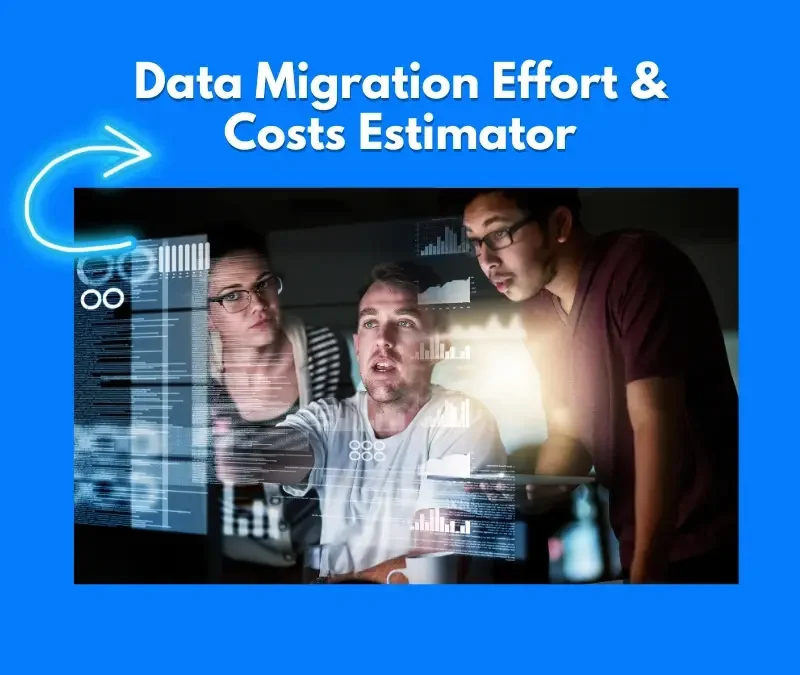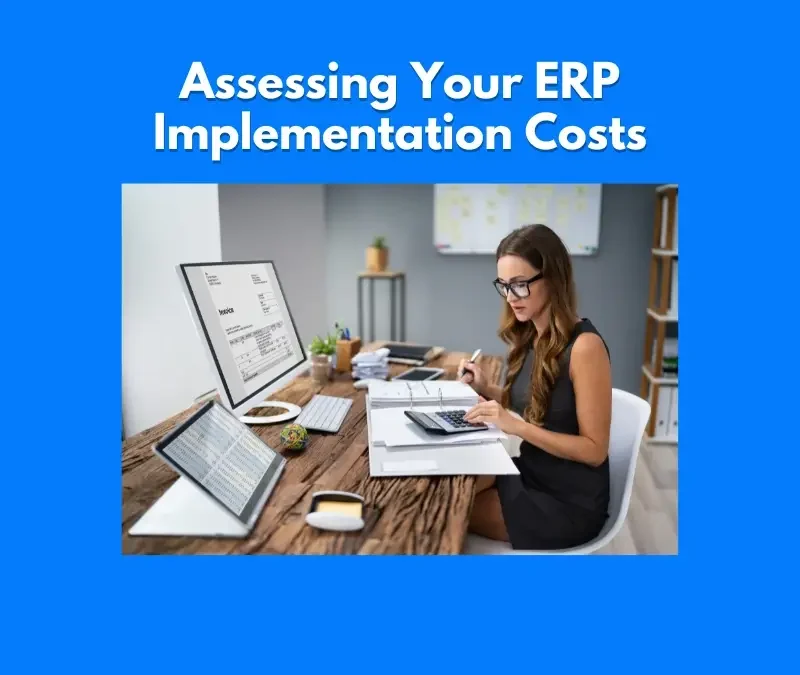SAP Articles
Project Scope Template: The #1 Mistake You’re Making!
Noel DCosta
- Last Update :
Sometimes, teams fill out a project scope template and move on. That part feels easy. But weeks later, during design or build, someone flags a process that was “assumed to be in scope.” The conversation gets uncomfortable. I have seen this happen too often. A few unchecked assumptions at the start quietly shift the project weeks off course.
A strong SAP scope template should challenge the team, not just record decisions. It should connect to your resource plan, like the structure shared in this article on SAP resource allocation. Without that link, you may sign off scope without even knowing if you have enough people to deliver it.
Many scope templates ignore key elements. They say what is being built but avoid calling out what is not. For example, non-functional topics like audit logging, system availability, or reporting latency. These rarely show up early but will almost always be expected later. It helps to align this with risk factors mentioned here: SAP risk assessment and mitigation.
Some templates also fail to flag where legacy code will remain, even if your team has committed to a clean core model. That gap causes friction later, which is why it’s worth reviewing this guide to SAP clean core.
Here are common gaps you should actively address in the scope document:
Which country-specific processes are deferred
Whether data migration includes mapping or just load
Shared master data ownership across modules
Non-functional scope like uptime, performance, or audit trails
Interfaces that are being kept as-is temporarily
- What’s being delivered – No vague descriptions, just clear, specific outcomes.
- Deadlines – No moving targets. If dates change, it’s documented.
- Who’s doing what – If it’s not assigned, it won’t get done.
- What’s NOT included – The most important part. Keeps people from sneaking in extra work.
This isn’t just for big projects. Even small ones need clear boundaries. Otherwise, you’re setting yourself up for endless scope creep, frustrated teams, and clients who swear they thought that was included.
It’s important to nail down the scope now. It’ll save you a lot of time later.

Defining Project Scope in SAP projects ensures clarity on deliverables, functionalities, and boundaries, keeping teams and stakeholders aligned.
A well-defined Project Scope helps prevent scope creep, contain costs, and maintain realistic timelines throughout an SAP project.
Key Takeaways: Get Your Project Scope Right
Start with clarity, not assumptions. Spell out exactly which modules, processes, and locations are in scope. Don’t rely on tribal knowledge. If it is not written, it will get missed.
Document what is excluded. This is where most teams go wrong. They assume exclusions are obvious. Later, someone adds a country, interface, or report without raising a change.
Tie scope directly to your project charter. If those two documents do not align, you will face pushback during sign-off.
Include data migration scope. Will you move open items only, or full history? What about archiving rules? This often becomes a blind spot. Our article on data migration failures covers why this matters.
List non-functional scope. Include items like audit logs, resilience, and performance expectations. These often get dropped during planning and show up as blockers late in testing.
Align scope with resource planning. If a workstream has no assigned lead, it probably won’t get delivered.
Update the scope template throughout the lifecycle. After each phase, explore, design, test, revalidate and version it.
Use it as a control point. Every change request must trace back to whether it fits current scope. If not, it should follow formal approval.
Assign ownership for each item. Not just module leads, but also business counterparts. Avoid unclear accountability.
Review scope as part of risk planning. Gaps in scope are usually tied to known project risks. Document them early.
What is a Project Scope Template?

In my opinion, an SAP Project Scope Template is your project’s holy grail. It tells you exactly what’s being done, what’s not, and who is responsible for what. Skip this step, and you are opening the door to confusion, delays, and a string of “just small” requests that slowly turn into a full-blown derailment.
If you have been on an SAP project, you already know how quickly it spins out. One stakeholder assumes a specific report is included. Another figures a few custom enhancements will not impact the timeline. Nobody writes it down, and everyone thinks they’re right.
Soon enough, the team is buried under unplanned tasks. Timelines slip. Pressure builds. At that point, going back to clarify scope feels like redoing everything from scratch.
This template helps shut that down early. It forces alignment while there’s still time to fix it. It sets boundaries. It protects the team. It also ties closely to areas like resource planning, risk management, and overall project control.
Here is what it should cover:
Project Objectives – Why are you even doing this SAP implementation? What is the end goal? Tie it back to your project charter.
Scope Definition – Which modules, which plants, which integrations. Be specific.
Exclusions – This is where you draw the line. If it is not listed, it is not included.
Deliverables – Functional specs, reports, test cases, training material, confirm it all.
Timelines – When is each phase due? Soft dates cause hard problems later.
Roles & Responsibilities – Who signs off? Who owns UAT? Make sure it is written down.
Without this, the project slowly turns into a guessing game. Scope becomes interpretation. And that is how even the best teams lose control.
When is a Project Scope Template Critical?
So, the short answer is always. In my opinion, if you are managing any SAP project, whether it is big or small, a Project Scope Template is essential. Without it, you are taking risks with your time, your budget, and your ability to keep the team aligned.
Let’s talk about where things often go wrong. These situations are exactly where not having a scope template causes real damage:
Big Budget, High Stakes
If you are rolling out SAP across a company, clear scope boundaries are not optional. Without them, new requests keep surfacing. People forget what was agreed. Costs go up, the timeline stretches, and the program loses direction. You can see this happen often in large initiatives like the ones described in the SAP implementation cost breakdown.Multiple Teams Involved
The more teams you bring in e.g. IT, business, external vendors, the more risk of miscommunication. A proper scope keeps everyone working from the same expectations. This ties in with how you build your team structure, which we explored in this ERP team guide.Clients Who Change Their Minds
Every project has this. A stakeholder casually says, “Can we add this?” Then another request shows up the next day. The only way to keep things under control is with documented scope. It helps you have the right conversation. The article on avoiding SAP scope creep goes deeper into this pattern.Tight Deadlines
If your schedule is already tight, you cannot afford vague scope. You need a list that’s clear, specific, and approved. Otherwise, missed dependencies turn into delays. This is directly linked to project planning and control.Custom Work
Standard projects are easier to manage. But when you are doing something custom, every little detail must be captured and agreed early. Without a scope template, people rely on memory, and that usually fails under pressure.
Bottom line, if you skip the scope template, you lose the structure that holds the project together. It might not seem urgent in the beginning. Later, it always is.
Key Components of an Effective Project Scope Template

If you do not define the scope of your SAP project early and clearly, everything gets harder later. Timelines stretch. Requirements drift. Teams disagree on priorities. And no one quite knows how it happened.
In my opinion, the Project Scope Template is what keeps all of that in check. It brings structure. It makes assumptions visible. It lets you manage expectations properly before they derail the project.
Here’s what a complete Project Scope Template should include, and more importantly, why each part matters.
1. Project Objectives
This section gives the project purpose. It explains why the work is being done and what the business expects to see when it’s finished.
Without this, you lose direction. Teams focus on system features instead of outcomes. That is how people build “solutions” no one uses.
It should answer:
What problem is this solving?
What will be different once the system is live?
How will we know if the project succeeded?
Also see how your SAP project charter should align with these objectives.
2. Scope Definition
This is where the real clarity starts. You define what is included and what is not.
It matters because unclear scope leads to scope creep. And scope creep leads to delays and cost overruns.
Ask:
Which SAP modules are being implemented?
Is data migration included? From how many systems?
Will there be training, documentation, or Hypercare?
What about third-party integrations?
You want no ambiguity here. If it is not written, do not assume it is included.
3. Exclusions
Often ignored, but critical. This is your protection against assumptions.
Projects fail quietly when someone adds tasks informally, thinking they are “obvious.” Exclusions help avoid those surprises.
Examples might include:
No custom reports beyond standard
No third-party tools unless approved
No infrastructure setup
No ongoing support post go-live
This section helps you say no, with backup.
4. Deliverables
Deliverables make scope concrete. They turn objectives into things people can see, touch, and sign off on.
Without this list, people make their own interpretations. One team expects training videos. Another expects 100 custom reports. You cannot win that game.
Checklist examples:
Configured SAP system for Finance, Procurement, HR
Data migration of past five years only
20 users trained with job aids delivered
UAT completed and signed off
This keeps everyone focused on what is being delivered, not just what is being discussed.
5. Timelines
Timelines give urgency. They drive accountability.
You cannot plan resourcing or manage dependencies without dates. Vague terms like “Q3 delivery” create friction when other projects overlap.
Break it down:
Blueprint: 6 weeks
Configuration: 12 weeks
Testing: 8 weeks
Go-live: September 2025
If something slips, document the reason. For help managing these shifts, look at project planning and control.
6. Roles and Responsibilities
Without this, work falls through the cracks. Or worse, multiple people think someone else is handling it.
Each role should be named. Each responsibility should be tied to a person.
Include roles like:
Project Manager: Oversees plan and escalations
Functional Leads: Configure and test modules
Business Users: Validate processes
Executive Sponsor: Owns scope changes
Clear roles also support your ERP team structure, especially across large projects.
7. Change Management Process
Things will change. That part is guaranteed. What matters is how change is managed.
If new requests get added without control, timelines collapse. Scope increases silently. Morale drops.
Define how it works:
New requests must be documented
Timeline and budget impact reviewed
Project sponsor approves or rejects
This process keeps the plan intact as the work evolves.
8. Assumptions and Constraints
Every project has gaps in knowledge. You will never know everything at the start. This section gives you space to be transparent about that.
Assumptions might include:
Users will be available for testing
Interfaces will use standard protocols
Minimal customization required
Constraints might include:
Go-live must happen before fiscal year close
Budget is capped at $5 million
Documenting these gives you leverage when things change, especially around SAP implementation cost control.
Final Thoughts
In my view, a good Project Scope Template is not just for documentation. It protects your project team. It aligns business and IT before major decisions get locked in.
Without it, people rely on memory. And memory breaks down fast when deadlines start to slip.
Write it once. Revisit it often. Use it to keep your project real.
1. Project Overview
Project Name: [Enter SAP Project Name]
Project Sponsor: [Enter Sponsor Name]
Project Manager: [Enter Project Manager]
Start Date: [Enter Start Date]
End Date: [Enter End Date]
2. Objectives & Success Criteria
[Clearly define the purpose of the SAP implementation and key success metrics.]
3. Scope Statement
Included: [List the SAP modules, business functions, and system integrations covered.]
Excluded: [Clearly state what is NOT part of this project to prevent scope creep.]
4. SAP Modules Involved
[Specify modules like SAP S/4HANA, FICO, MM, SD, PP, HR, etc.]
5. Key Business Processes
[List critical business processes affected, e.g., Order to Cash, Procure to Pay, Record to Report.]
6. Project Deliverables
[Clearly define the deliverables, e.g., SAP configuration, user training, data migration, integrations, testing.]
7. Technical & Infrastructure Requirements
[Specify cloud vs. on-premise, SAP hosting, required integrations, hardware/software requirements.]
8. Project Milestones & Timeline
[Provide a high-level timeline with key milestones (Blueprinting, Development, Testing, Go-Live, Hypercare).]
9. Key Stakeholders
[List business leaders, SAP consultants, IT team, end users, and sponsors involved in the project.]
10. Roles & Responsibilities
[Define who is responsible for each part of the project (SAP partner, internal IT, business users, etc.).]
11. Risks & Constraints
[Identify key risks, dependencies, budget constraints, and mitigation strategies.]
12. Testing & Validation
[Describe testing plans (Unit Testing, SIT, UAT), success criteria, and validation steps before go-live.]
13. Data Migration & Integration
[Define how legacy data will be migrated, cleansed, and integrated with SAP. Include third-party system integration details.]
14. Change Management & Training
[Describe how end users will be trained and how change will be managed across the organization.]
15. Support & Maintenance
[Define post-go-live support, maintenance plans, and transition to steady-state operations.]
16. Approval & Sign-Off
Approved by: [Name]
Signature: ____________
Related Topics: SAP Project Scope
SAP Project Scope Template
Control and manage SAP scope with structured documentation and review checkpoints.
SAP Clean Core Strategy
Limit customization and keep your SAP scope upgrade-friendly with clean core principles.
SAP Project Risk Assessment Matrix
Identify scope-related risks and mitigation strategies before they derail your implementation.
SAP Implementation Project Charter
Document scope, objectives, and stakeholder alignment with a practical SAP project charter.
Tips for Using a Project Scope Template Effectively

A Project Scope Template only works if you actually use it properly. Writing it is just step one. The real work is getting people to follow it and refer to it throughout the project.
Here’s how to make sure your scope template does its job.
1. Get Everyone Involved Early
If you build the scope in isolation, expect pushback later. People will say, “I didn’t agree to that” or “We assumed this was covered.”
What to do:
Involve stakeholders from business, IT, and leadership right from the start
Walk through the scope together, line by line
Make sure everyone understands what’s included and what’s not
This aligns closely with how you structure your SAP implementation team. Involvement drives ownership.
2. Be Specific. Vague Scope Leads to Scope Creep
If your scope says, “Implement SAP,” that’s not helpful. It creates space for assumptions.
What to do:
List modules, processes, interfaces, data volumes, and training needs in detail
Write exclusions clearly to prevent misinterpretation
If something is not in writing, consider it out
For more, refer to how we’ve tackled scope creep prevention.
3. Lock Down the Approval Process
People will ask for changes. The question is whether you allow them in without structure.
What to do:
Set up a change request process from day one
Require impact analysis for every change
Route approvals through the project sponsor
This ties directly into broader project planning and control. You need a process that holds under pressure.
4. Keep the Scope Visible
If your scope lives in an outdated email or buried folder, no one will follow it.
What to do:
Store the document in a shared, accessible location
Review it in steering committee and workstream meetings
Reference it during every change discussion
Visibility reinforces consistency. Without it, people make their own assumptions.
5. Watch for Scope Creep (It Starts Small)
Scope creep rarely begins with big requests. It usually starts with one tweak, then another.
What to do:
Stick to the change request process, even for “quick” changes
Remind teams that small extras add up over time
Push back on undocumented requests, even if they sound minor
This point echoes what’s covered in our breakdown of SAP cost overruns.
6. Define What Success Looks Like
If you do not define success upfront, the project will drag on indefinitely.
What to do:
Set clear success criteria during planning
Align deliverables to scope items and milestones
Confirm what counts as “done” and get sign-off
This prevents endless tweaking post-go-live.
7. Don’t Skip Sign-Off
If the scope is not approved, it is just a draft. That’s how you lose control fast.
What to do:
Get formal sign-off from key decision-makers before build starts
Store the signed document somewhere visible to the team
If questions come up later, refer back to that signed scope
Without sign-off, enforcement becomes guesswork.
A Project Scope Template is meant to guide, not just document. If you do not use it as part of your daily process, the project will drift. Stick to what’s written. Revisit it often. And when change comes, and it always does, run it through a system that protects the team and the timeline.
Free and Premium Project Scope Template Examples

Not all project scope templates are created equal. Some are basic and work for small projects, while others are designed for large-scale, complex implementations like SAP Activate rollouts.
Choosing the right one can save you hours and prevent costly mistakes. Here’s a mix of free and premium options to consider:
1. Free Templates to Get Started
- HubSpot’s Project Scope Template: Ideal for marketing campaigns and small business projects. Simple and easy to customize.
- Smartsheet’s Free Templates: Offers industry-specific templates, from IT to construction, all downloadable for immediate use.
- Project Management Institute (PMI): Access basic templates as part of a PMI membership, perfect for beginners in project management.
2. Premium Tools Worth the Investment
- MS Project: Excellent for detailed timelines and resource allocation, especially in enterprise projects.
- SAP Activate Templates: Tailored for SAP S/4HANA projects, these templates align with Activate’s methodology, covering Prepare to Go-Live phases.
- Monday.com: Intuitive interfaces with pre-built templates that adapt to multiple industries and project sizes.
3. How to Choose the Right Template
- For smaller projects, free templates are often enough.
- Large-scale initiatives, like ERP implementations, demand premium tools with built-in project management features.
- Look for templates that offer flexibility and scalability as your project will evolve, and your scope document should too.
With the right template in hand, you’re not just organizing, you’re building a roadmap for success. Explore these options and get started today!
Related Topics: SAP Project Scope
SAP Project Scope Template
Control and manage scope with a structured template.
Change Management Plan Success
How to handle scope changes smoothly and avoid disruptions.
SAP Project Risk Matrix
Identify scope-related risks and plan mitigation strategies.
Start Your SAP Implementation Project Right
Scope definition best practices for effective project kickoff.
Common Mistakes to Avoid When Defining Your Project Scope Template

Defining scope sounds easy, but I can tell you it’s not. “Write down what the project includes and move on”, that’s what you are usually told. But in reality, this is where most projects start encountering problems. If you get the Project Scope Template wrong, expect delays, scope creep, and endless debates over what was “supposed” to be delivered.
Here are the biggest mistakes people make when defining project scope and how to avoid them.
1. Being Too Vague
If your scope says, “Implement SAP,” you’ve already failed. That could mean anything. What modules? What customizations? What reports?
What to do:
- Be specific. List every included module, integration, and key deliverable.
- If something is unclear, rewrite it until there’s no room for misinterpretation.
A vague scope is an open invitation for extra work.
2. Ignoring What’s Not Included
This is where projects get bloated. If you don’t list exclusions, expect stakeholders to assume everything they want is covered.
What to do:
- Have a dedicated Exclusions section in the scope template.
- Call out things like “No custom reports beyond standard SAP functionality.”
- If someone tries to add work later, point them here.
If you don’t define the limits, others will push them.
3. Letting Too Many People Influence the Scope
Everyone wants their feature included. If you say yes to everything, the project becomes unmanageable.
What to do:
- Only key stakeholders should define the initial scope.
- If additional requests come in, use a formal change request process.
- Push back when necessary. Not everything can be a priority.
Trying to please everyone leads to never-ending scope creep.
4. Skipping Deliverables
Saying “we will implement SAP” isn’t enough. What exactly is being delivered? If you don’t define deliverables, people will keep adding new ones.
What to do:
- Write a Deliverables section. Be specific.
- Example: “Full SAP Finance module with standard reporting and five customized reports.”
- Get sign-off on these before starting.
If a deliverable isn’t listed, it’s not part of the project. Period.
5. Setting Unrealistic Timelines
Optimism is great, but overpromising deadlines will only cause failure. “We can implement SAP in three months” is a disaster waiting to happen.
What to do:
- Base timelines on real-world experience.
- Include buffer time for testing, training, and unexpected issues.
- If leadership pushes for unrealistic deadlines, push back with data.
A rushed project is a failed project.
6. Not Assigning Clear Responsibilities
Who’s doing what? If your scope doesn’t spell this out, expect chaos.
What to do:
- List roles and responsibilities in the Project Scope Template.
- Example: “SAP Consultants configure system, Business Users provide test cases, IT handles integrations.”
- If it’s not assigned, it won’t get done.
People assume someone else is responsible, which is a common but huge problem. Don’t let that happen.
7. Ignoring Scope Change Procedures
Changes will come. If you don’t have a process, everything turns into an emergency.
What to do:
- Define a Change Control Process in the scope template.
- Example: “All scope changes require documentation, impact analysis, and approval from the project sponsor.”
- No change should happen without formal approval.
This prevents last-minute surprises from wrecking your project.
8. Forgetting to Get Sign-Off
A scope document without approval is worthless. If key stakeholders don’t sign it, they can (and will) challenge it later.
What to do:
- Get formal signatures from project sponsors and leadership.
- Store the approved document in an accessible place.
- If someone challenges the scope later, remind them they signed off.
No approval, no project. Simple as that.
A Project Scope Template isn’t just a document, it’s your shield against confusion, scope creep, and missed deadlines. Get it right or expect to pay for these mistakes later.
Common Mistakes to Avoid When Defining Project Scope
| Mistake | Impact | How to Avoid It |
|---|---|---|
| Unclear Objectives | Leads to misalignment between stakeholders and project failure. | Define SMART objectives (Specific, Measurable, Achievable, Relevant, Time-bound) before finalizing scope. |
| Scope Creep | Uncontrolled changes increase costs, timelines, and resource strain. | Set clear boundaries, document scope changes, and use a formal change control process. |
| Ignoring Stakeholder Input | Key requirements may be missed, leading to rework and dissatisfaction. | Engage all stakeholders early to ensure alignment on needs and expectations. |
| Overcomplicating Scope | Delays execution, increases risk, and makes implementation harder. | Focus on core requirements first and avoid unnecessary features or complexity. |
| Failing to Define Deliverables | Unclear expectations lead to project delays and miscommunication. | Clearly list all deliverables and ensure stakeholders agree on scope. |
| Underestimating Resources | Results in budget overruns and project delays. | Conduct realistic resource planning and validate workload estimates. |
| Lack of Risk Assessment | Unprepared teams struggle with unexpected challenges. | Identify potential risks early and develop contingency plans. |
| Inadequate Communication | Misinterpretations lead to misaligned expectations and costly corrections. | Establish clear communication channels and documentation practices. |
| No Defined Success Criteria | Hard to measure project completion and success. | Set clear KPIs and define measurable success criteria. |
| Not Reviewing Scope Regularly | Leads to outdated requirements and missed changes in business needs. | Schedule periodic scope reviews to ensure alignment with project goals. |
How Do You Document Customizations in your Project Scope Template?

Customizations are a slippery slope. One minute, you’re tweaking a report. The next, you’re buried under a pile of unnecessary changes that delay go-live, inflate costs, and make upgrades a nightmare. If you don’t manage customizations properly, your Project Scope Template might as well be useless.
Here’s how to keep them under control.
1. Define What’s Standard and What’s Custom
SAP (or any system) comes with out-of-the-box features. Before you even think about customizations, list what you can use as-is.
What to do:
- Document standard functionality and check if it meets business needs.
- List must-have customizations separately.
- Push back on unnecessary modifications.
If a business user wants a small tweak, ask: Can this be done with configuration instead of customization? If yes, don’t customize.
2. Categorize Customizations
Not all customizations are equal. Some are business-critical. Others are just “nice to have” and will slow you down.
- Sort them into three buckets:
Essential: Without this, the business process won’t work. (e.g., regulatory compliance, legal reporting) - Important but Not Critical: Helps efficiency but isn’t a showstopper. (e.g., custom workflows)
- Unnecessary: A personal preference disguised as a requirement. (e.g., color changes in reports)
If it’s not essential, challenge it.
3. Set Up a Customization Approval Process
If you let everyone request changes freely, you’ll never finish the project. Make people justify their requests.
What to do:
- Require a written request for each customization.
- Include business impact, cost, and risk analysis.
- Send all requests through a formal review process.
No approval? No customization. Simple.
4. Watch Out for Hidden Costs
Customizations are never just about coding. They affect testing, training, documentation, and future upgrades.
Things to consider before approving custom work:
- How much extra testing will be needed?
- Will users need extra training?
- Will this customization break during upgrades?
Every customization increases long-term costs. Make sure it’s worth it.
5. Keep Customizations Aligned with Scope
A well-written Project Scope Template should clearly define what custom work is included. If a new request pops up mid-project, it needs formal review.
How to handle new requests:
- If it wasn’t in the original scope, treat it as a change request.
- Assess if it impacts the timeline or budget.
- Get approval before any development starts.
If someone says, “This should have been included,” show them the scope document.
6. Limit the Number of Custom Reports
Users will always want more reports. If you build everything they ask for, you’ll never finish.
What to do:
- Provide a fixed number of reports in the scope (e.g., 10 key reports).
- Teach users how to extract their own data.
- Push back on unnecessary report requests.
Most requests are just variations of the same data. Consolidate where possible.
7. Plan for Upgrades
Customizations can break when you upgrade SAP or any system. If you overload your project with them, you’ll regret it later.
What to do:
- Use standard functionality wherever possible.
- Document every customization for future reference.
- Limit the use of hardcoded custom logic.
The fewer customizations, the smoother future upgrades will be.
8. Enforce Change Freeze Before Go-Live
Nothing kills a project like last-minute custom requests. If you keep adding changes, you’ll never go live.
What to do:
- Set a change freeze date before go-live.
- Any last-minute requests go into post-go-live enhancements.
- Remind stakeholders that delays cost money.
If a request comes too late, the answer is simple: “We’ll consider it after go-live.”
Customizations are necessary, but they need strict control. If you don’t manage them properly, they will derail your project. Keep them in check, stick to the Project Scope Template, and don’t let unnecessary changes destroy your timeline.
How Do You Manage Analytics in Your Project Scope Template?

Analytics is where the conversations get heated. Everyone wants reports, dashboards, and insights. But if you don’t define analytics requirements properly in your Project Scope Template, there will always be misunderstandings.
Here’s how to manage it in the right way.
1. Define Analytics Requirements from Day One
The biggest mistake you could do is waiting until the end to discuss reports. If analytics isn’t planned upfront, expect last-minute confusion.
What to do:
- Ask stakeholders early: What reports do you actually need?
- List essential reports, dashboards, and KPIs in the scope.
- Separate business-critical analytics from “nice to have” reports.
It the requirements are not documented, there will always be arguments on whether it’s in scope or not.
2. Lock Down the Number of Reports
Users will always ask for more reports. If you don’t set limits (in form of report types or complexity or effort), you’ll spend half the project building custom analytics.
How to handle it:
- Agree on a fixed number of standard reports.
- Define what each report should include.
- Push back on vague requests like, “We need better visibility.”
3. Standard vs. Custom Reports
Not all reports need custom development. Many businesses can use out-of-the-box reporting tools.
Define what’s standard and what’s custom:
- Standard Reports: Prebuilt reports in SAP Standard Reports, SAP Analytics Cloud, Power BI, or Tableau.
- Light Customization: Minor changes like adding extra fields.
- Full Custom Reports: Built from scratch. These are expensive and time-consuming.
If standard reports work, don’t build custom ones, unless they are absolutely required.
4. Be Clear on Data Sources
Analytics only works if the right data is available. If users ask for reports that pull from multiple systems, your project just got way more complicated.
What to check:
- Where is the data coming from? SAP? Legacy systems? Third-party tools?
- Does the data already exist, or does it need extra processing?
- Is real-time reporting required? Or is daily batch processing enough?
The more sources, the higher the complexity.
5. Set Clear Access & Security Rules
Not everyone should see all reports. Sensitive data, salaries, financials, or HR metrics needs protection.
How to handle it:
- Define who gets access to each report.
- Restrict sensitive reports to specific roles.
- Ensure data security rules are in place before building dashboards.
If you don’t manage access, expect privacy issues and security risks.
6. Define How Reports Will Be Delivered
Everyone assumes reports will magically appear. Then, at go-live, they ask, “Where do I find my analytics?”
Clarify this upfront:
- Will reports be emailed? Accessed via a dashboard? Exported to Excel?
- How often will data refresh? Real-time? Daily? Weekly?
- Will users need training to use self-service reporting tools?
Make sure the reporting process is documented and understood.
7. Manage Last-Minute Report Requests
Someone will ask for an urgent report right before go-live. If you say yes, you’ll delay the project.
How to handle it:
- Stick to the scope, last-minute reports go into post-go-live enhancements.
- Require formal change requests for any new analytics.
- Make sure stakeholders agree on report priorities before development starts.
No scope = No extra reports.
8. Future-Proof Your Analytics
If your reports break every time SAP gets upgraded, you’ll have a long-term headache.
Plan ahead:
- Use flexible reporting tools that integrate well with SAP.
- Avoid hardcoded reports that require manual updates.
- Train users on self-service analytics so they don’t rely on IT for every report.
A good reporting strategy reduces future work.
Analytics Can’t Be an Afterthought. You Have to Plan it Early!
If you don’t control analytics in your Project Scope Template, your project will drag on with endless reporting requests.
Define it early, set limits, and enforce the scope. Otherwise, you’ll spend months fixing last-minute analytics issues.

Related Topics: SAP Project Scope
Why SAP Data Migration Fails (and How to Fix It)
Scope pitfalls in migration and proven corrective strategies.
Requirements Gathering Template Hacks
Practical tips to define and validate scope during requirements phase.
Project Planning & Control
Tips for aligning scope control within project planning cycles.
Change Management Plan Success
Strategies to handle scope changes smoothly and reduce chaos.
Conclusion
If your Project Scope Template is weak, your project will be a disaster. It’s that simple. Scope creep will sneak in, deadlines will slip, and your team will waste time on work no one planned for.
This isn’t just about documentation. It’s about control. If the scope isn’t locked down, expect constant arguments over what’s included. Expect last-minute changes that wreck your schedule. Expect “urgent” requests that could’ve been handled months ago.
A strong scope means:
- Everyone knows what’s included and what’s not.
- Deliverables are clear with no surprises.
- Customizations and analytics are managed properly.
- Change requests follow a process, not gut decisions.
And most importantly, a Project Scope Template keeps you from spending weekends fixing problems that could’ve been avoided.
What Others Are Saying
Readers who’ve used scope templates before have shared their struggles:
- “I wish I had set clearer exclusions. We ended up doing double the work because we didn’t define what was out of scope.”
- “Stakeholders kept adding new reports mid-project. Having a structured change request process saved us from endless rework.”
- “Sign-off was the biggest issue. No one wanted to take ownership, and that led to confusion later.”
What’s been your experience? Have you had scope creep derail a project? Drop a comment or share your thoughts, I’d love to hear how you handle project scope in your work.
If you have any questions, or want to discuss a situation you have in your ERP or AI Implementation, please don't hesitate to reach out!
Questions You Might Have...
1. What is a project scope template, and why is it important?
A project scope template is like a blueprint for your SAP project. It lays out the objectives, what’s included, what’s not, and who’s involved. It’s important because:
- It gives everyone a clear understanding of the project’s goals.
- It helps avoid scope creep by setting boundaries.
- It ensures everyone knows their role and responsibilities.
- It keeps the project focused and on track.
2. How does a project scope template reduce the risk of failure?
A good scope template prevents confusion and misalignment. Here’s how it helps:
- It ensures everyone agrees on the project’s goals and tasks.
- It sets clear expectations for deliverables and deadlines.
- It allocates resources effectively to avoid delays or overruns.
- It provides a reference point if questions or issues come up.
3. What are the key parts of a project scope template?
A strong scope template includes:
- Clear objectives for the project.
- A detailed description of what’s included and excluded.
- A list of deliverables and milestones.
- Roles and responsibilities of the team members.
- Assumptions, constraints, and timelines.
4. How can I customize a project scope template for my business?
Tailoring your scope template is all about making it work for your unique needs. Start by:
- Talking to key stakeholders to gather their input.
- Aligning the project goals with your business priorities.
- Focusing on deliverables that matter most to your operations.
- Adding any industry-specific requirements or standards.
5. How often should I review my project scope?
The project scope isn’t something you write and forget. You should:
- Review it at major milestones to make sure you’re on track.
- Update it when there are changes to goals or requirements.
- Check it regularly to ensure it still matches the project’s direction.
6. What mistakes should I avoid when creating a project scope template?
When creating a project scope, avoid:
- Writing vague objectives that don’t provide clear direction.
- Skipping input from stakeholders, which can lead to misalignment.
- Underestimating the time, budget, or people you’ll need.
- Forgetting to review and update it as the project evolves.
7. How does a project scope template help with team alignment?
A well-written template gets everyone on the same page. It:
- Clearly explains the project goals and what’s expected from the team.
- Shows who’s responsible for what, so there’s no confusion.
- Creates a shared understanding of what’s included and excluded.
- Provides a central document everyone can refer to when needed.
8. Can a project scope template change during the project?
Yes, it can evolve, but it’s important to manage changes carefully. If updates are needed:
- Document what’s changing and why.
- Communicate the updates to all team members and stakeholders.
- Reassess whether the updated scope still aligns with the project’s goals.
9. What happens if I don’t use a project scope template?
Skipping a project scope template can lead to:
- Scope creep, where unplanned tasks overwhelm the project.
- Confusion among team members about their roles or priorities.
- Wasted time and resources on work that doesn’t add value.
- Delays and budget overruns from poor planning.
10. How do I get started with a project scope template?
Getting started is simple. Follow these steps:
- Involve key stakeholders early to get their input.
- Clearly define the project’s goals and boundaries.
- List the deliverables, timeline, and roles needed to complete the project.
- Review the scope with everyone involved and make adjustments as needed.
This process ensures your scope template is practical, clear, and ready to guide your project.











